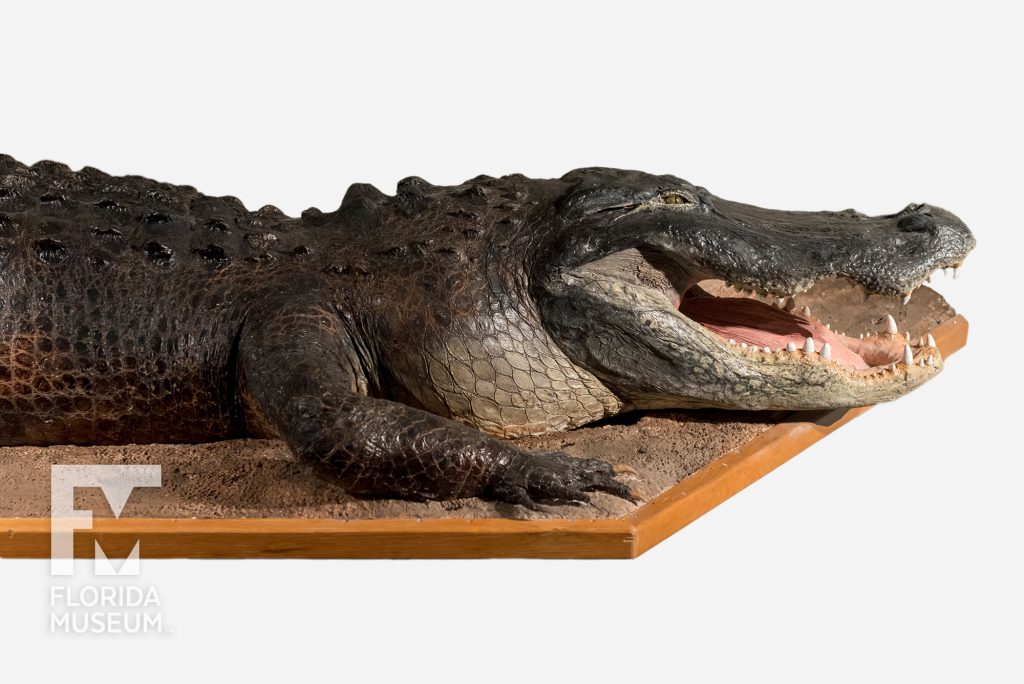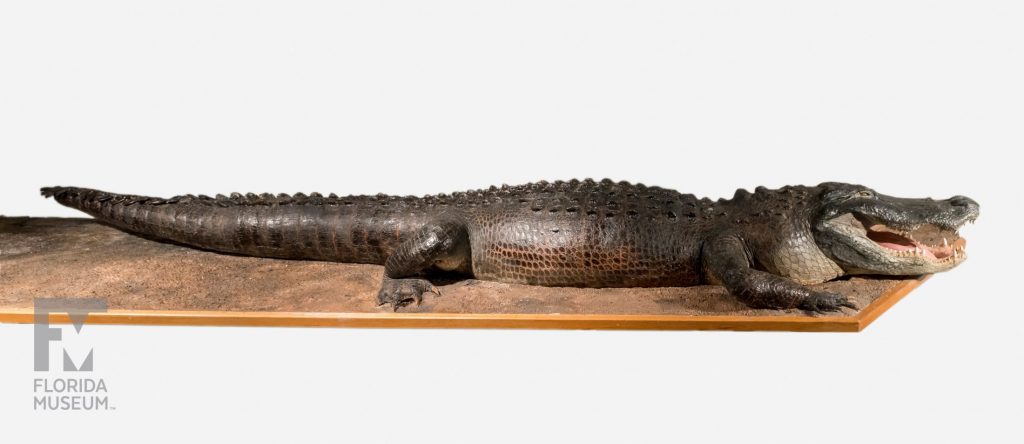A common sight in today’s Florida landscape, recent Museum research comparing modern and fossil skeletons shows that alligators remained virtually unchanged for at least 8 million years, and may be up to 6 million years older than previously thought.
Summary
American Alligator (Alligator mississippiensis)
From northern Florida, early 2000s
Florida State Reptile
Collection
Story
In 1987 the Florida state reptile officially became the American Alligator. It was of course found statewide, they were very mega fauna, important creatures; up to 14-15 feet in length and weighing over half a ton. (Although that’s the record, not the average-sized one, fortunately.) They’re impressive, dangerous and we knew a lot about their natural history. However, when you look at the historical context of how the state of Florida ended up naming the alligator the Florida state reptile, I think there are a lot of components involved.
If you look at what was happening during the time period and just before the alligator was named as the official reptile for the state of Florida — which incidentally, Louisiana beat us to; Louisiana had the alligator as a state reptile in 1983 and after that Mississippi had it in 2005 — but in 1967 the gator populations in Florida had become decimated and it was listed as a state endangered species. By 1973 it was a federally endangered species. Although it was doing well in some states like Louisiana, in Florida the populations had declined tremendously. In 1987, because of very strong conservation activity, it happens that the Florida alligator came off of the federal endangered species list and that’s the same year that the American Alligator was named as the state official reptile. So I believe that is one component.
Historical context tells us that if we go back to the early 1900s, that when the University of Florida was founded — which is the official land-grant institution — there was quite a stir in how, and what, would be the symbol of the University of Florida. There are several stories that come around. One of them relates a merchant named Miller and his son who traveled to South Carolina, obtained a pennant for the University of Florida which happened to be blue and orange and he put a gator on that banner that they produced and that was one story as to how the University of Florida got to be an alligator. The second story was related to a tremendous football player, evidently, who had a “Bo Gator Club” and that also was during the same time period. And needless to say there other ideas as to how the University of Florida became a gator. Why is that important? Well, if you look at the state legislature you’ll see that a very large percentage of the alumni happen to be Florida alumni!
Max Nickerson
Curator, Herpetology*
Florida Museum of Natural History
Additional Information
The American Alligator is the official state reptile of Florida.
Exhibit
On display Sept. 23, 2017-Jan. 7, 2018, Rare, Beautiful & Fascinating: 100 Years @FloridaMuseum celebrated the Museum’s rich history. Each Museum collection was asked to contribute its most interesting items and share the stories that make them special. Though the physical exhibit is closed, this companion website remains online, providing an opportunity to experience the Florida Museum’s most treasured specimens.
Exhibit Area: 100 Years of History
Theme: Sunshine State Symbols
 Want to see more? Explore more than 300 breathtaking color photos of plants, animals, fossils and cultural heritage materials from the Florida Museum of Natural History’s collections in the award-winning book All Things Beautiful available from the University Press of Florida.
Want to see more? Explore more than 300 breathtaking color photos of plants, animals, fossils and cultural heritage materials from the Florida Museum of Natural History’s collections in the award-winning book All Things Beautiful available from the University Press of Florida.
*This title was accurate at the time the exhibit was on display in 2017. Please visit the collection website to verify current staff and student information.

